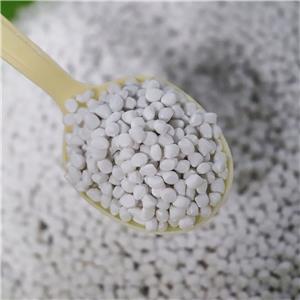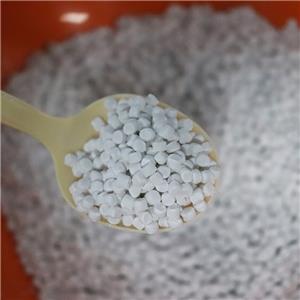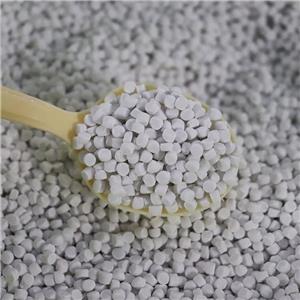Application and characteristics of heavy calcium carbonate in 5 major coatings
Heavy Calcium Carbonate is a powder material obtained from calcite, marble, limestone, chalk, alabaster and other natural minerals as raw materials, processed by mechanical grinding.
Architectural coatings are generally composed of 3 parts: primary film-forming substances, secondary film-forming substances and auxiliary film-forming substances. Heavy calcium carbonate used in architectural coatings is mainly used as secondary film-forming substances, i.e. pigments and fillers, with the following characteristics: particle shape, because of the mechanical method of preparation, most of them are irregular and angular, with a rough surface. In terms of particle size, most of them are above the micron level, and nowadays, ultrafine calcium bicarbonate with a particle size of less than 10 μm, such as 12,500 mesh (1 μm), has been developed. In terms of purity, it is generally required to be not less than 97% when applied in coatings. In terms of whiteness, it is generally required to be not less than 90%. In other aspects, the moisture should not be higher than 0.5%, the pH value should be between 8.0~9.0, and the oil absorption value should be within the range of 15~33mL/100g.
1、Interior wall coating
There are many kinds of interior paints, in recent years, mainly acrylate emulsion coatings, the main technical indicators are constructability, low temperature stability, drying time, film appearance, contrast ratio, alkali resistance and scrub resistance.
Heavy calcium carbonate used in interior wall coatings to reduce its cost at the same time, but also improve its many properties, such as hiding power, weathering, viscosity, hardness, abrasion resistance, scrub resistance, low temperature stability.
Research shows that the calcium carbonate produced by large calcite processing has high whiteness, low content of impurity elements, uniform particle morphology and rules, etc. When applied to the interior wall emulsion paint, the paint-to-ratio, viscosity and scrub resistance are better than the heavy calcium carbonate produced by small calcite or dolomite processing.
The smaller the particle size of heavy calcium carbonate, the greater the oil absorption, its scrub resistance decreases; large particle size of heavy calcium carbonate mixed in very fine titanium dioxide can act as a skeleton, and due to the small amount of oil absorption, so that the hardness of the coating film, so the coverage is uniform.
2、Exterior wall coatings
There are many varieties of exterior coatings, and the main technical indexes are constructability, drying time, film appearance, contrast ratio, water resistance, alkali resistance, scrub resistance, temperature change resistance and so on.
Heavy calcium carbonate has relatively low oil absorption and low need for base material, which can be used in exterior coatings to reduce cost, increase film thickness, improve mechanical strength and abrasion resistance.
Research shows that, in terms of whiteness, the coating with high whiteness calcium carbonate powder as body pigment is the highest; in terms of toughness, the coating with different varieties of calcium carbonate powder as body pigment is not much different; in terms of scrub resistance, the coating with good quality and small fineness calcium carbonate powder as body pigment is the best.
3、Floor coating
Floor coating mainly has epoxy wear-resistant floor coating, polyurethane elastic floor coating, non-slip floor coating and anti-static floor coating 4 categories. The main technical indicators are film appearance, adhesion, impact resistance, wear resistance, drying time, tensile strength, elongation, water resistance and alkali resistance.
Since the selection principles of floor coating filler include low oil absorption, moderate fineness and stable performance, heavy calcium carbonate is a good choice. Heavy calcium carbonate used in floor coatings is mainly used as a filler material, which plays a role in improving the rigidity, hardness, abrasion resistance, heat resistance and stability of the products.
4, waterproof coating
Waterproof coating refers to the formation of the coating film can effectively prevent rain or groundwater leakage to the building interior of a class of coatings. According to the dispersion medium can be divided into two categories of water emulsion and solvent-based. The main technical indicators are heat resistance, impermeability, low-temperature flexibility, solid content, tensile properties, adhesion and so on.
As this kind of coating is generally thicker film, so there is no need to use titanium dioxide and other expensive fillers, cheap heavy calcium carbonate and so on can improve the viscosity of the film, reduce the amount of thickeners; but because of its own density, the settling volume is small, heavy calcium carbonate is applied to which is easy to lead to precipitation, affecting the storage of the product. In this kind of coating, the application of heavy calcium carbonate mainly plays a role in improving the tensile strength, elongation at break, viscosity, elongation and other properties.
Anionic emulsified asphalt as the basic raw material for the preparation of high-viscosity anti-slip waterborne asphalt waterproof coating, the coating using calcium bicarbonate as the main filler, easy to dispersed and make the coating with appropriate cohesive strength and gloss, and storage stability is good.
The acid resistance of the waterproof coating prepared by using heavy calcium carbonate as filler is very poor. When the heavy calcium carbonate and precipitated barium sulfate for compounding, and then as a filler applied to the waterproof coating formula system, the polymer molecules can completely encapsulate the heavy calcium carbonate particles, at the same time can enhance the acid resistance of the coating film, so that after acid treatment of waterproof coating fracture elongation to meet the standard requirements.
5、Fireproof coating
According to the fireproofing mechanism, it can be divided into two categories: intumescent and non-intumescent. Intumescent fireproofing coating, as passive fireproofing coating, is a kind of fireproofing material which is the simplest, the most economical and the most effective in blocking the rapid spread of fire. However, for this kind of coating, adding too much pigmented filler will inhibit the expansion of the coating, and generally only a very small amount of inorganic pigmented filler can be added to meet the requirement of covering power.
Therefore, heavy calcium carbonate is mainly used in non-intumescent fireproof coating, its role includes: reduce the proportion of polymer in the organic coating, reduce the coating can decompose the combustible components; its own thermal decomposition, absorbing a large amount of heat to reduce the temperature of the protected material, and at the same time constantly decompose to produce carbon dioxide to block the flame diffusion; its own thermal decomposition of carbon dioxide to reduce the concentration of combustible gases and oxygen; because of its own alkaline, it can adjust the acidity of the coating. Due to its alkalinity, it can regulate the acidity and alkalinity of the paint and prevent the corrosion of the acidic paint on the substrate




